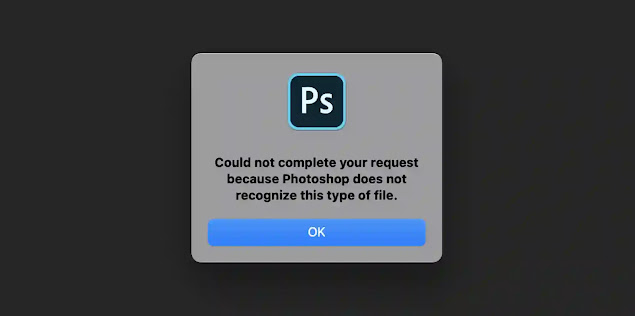How To Install and Configure Apache Web Server on Ubuntu 20.04
Introduction
The Apache HTTP server is the most widely-used web server in the world. It provides many powerful features including dynamically loadable modules, robust media support, and extensive integration with other popular software.
In this guide, we’ll explain how to install an Apache web server on your Ubuntu 20.04 server.
Prerequisites
Before you begin this guide, you should have a regular, non-root user with sudo privileges configured on your server. Additionally, you will need to enable a basic firewall to block non-essential ports. You can learn how to configure a regular user account and set up a firewall for your server by following our Initial server setup guide for Ubuntu 20.04.
When you have an account available, log in as your non-root user to begin.
Step 1 — Installing Apache
Apache is available within Ubuntu’s default software repositories, making it possible to install it using conventional package management tools.
Let’s begin by updating the local package index to reflect the latest upstream changes:
sudo apt update
Then, install the apache2 package:
sudo apt install apache2
After confirming the installation, apt
will install Apache and all required dependencies.
Step 2 — Adjusting the Firewall
Before testing Apache, it’s necessary to modify the firewall settings to allow outside access to the default web ports. Assuming that you followed the instructions in the prerequisites, you should have a UFW firewall configured to restrict access to your server.
During installation, Apache registers itself with UFW to provide a few application profiles that can be used to enable or disable access to Apache through the firewall.
List the ufw application profiles by
typing:
sudo ufw app list
You will receive a list of the application profiles:
OutputAvailable applications:ApacheApache FullApache SecureOpenSSH
As indicated by the output, there are three profiles available for Apache:
Apache: This profile opens only port 80 (normal, unencrypted web traffic)
Apache Full: This profile opens both port 80 (normal, unencrypted web traffic) and port 443 (TLS/SSL encrypted traffic)
Apache Secure: This profile opens only port 443 (TLS/SSL encrypted traffic)
It is recommended that you enable the most restrictive profile that will still allow the traffic you’ve configured. Since we haven’t configured SSL for our server yet in this guide, we will only need to allow traffic on port 80:
sudo ufw allow 'Apache'
You can verify the change by typing:
sudo ufw status
The output will provide a list of allowed HTTP traffic:
OutputStatus: activeTo Action From-- ------ ----OpenSSH ALLOW AnywhereApache ALLOW AnywhereOpenSSH (v6) ALLOW Anywhere (v6)Apache (v6) ALLOW Anywhere (v6)
As indicated by the output, the profile has been activated to allow access to the Apache web server.
Step 3 — Checking your Web Server
At the end of the installation process, Ubuntu 20.04 starts Apache. The web server should already be up and running.
Check with the systemd init system to
make sure the service is running by typing:
sudo systemctl status apache2Output●apache2.service - The Apache HTTP ServerLoaded: loaded (/lib/systemd/system/apache2.service; enabled;
vendor preset: enabled)Active: active (running) since Thu 2020-04-23 22:36:30 UTC; 20h agoDocs: https://httpd.apache.org/docs/2.4/Main PID: 29435 (apache2)Tasks: 55 (limit: 1137)Memory: 8.0MCGroup: /system.slice/apache2.service├─29435 /usr/sbin/apache2 -k start├─29437 /usr/sbin/apache2 -k start└─29438 /usr/sbin/apache2 -k start
As confirmed by this output, the service has started successfully. However, the best way to test this is to request a page from Apache.
You can access the default Apache landing page to confirm that the software is running properly through your IP address. If you do not know your server’s IP address, you can get it a few different ways from the command line.
Try typing this at your server’s command prompt:
hostname -I
You will get back a few addresses separated by spaces. You can try each in your web browser to determine if they work.
Another option is to use the Icanhazip tool, which should give you your public IP address as read from another location on the internet:
curl -4 icanhazip.com
When you have your server’s IP address, enter it into your browser’s address bar:
http://your_server_ipYou should see the default Ubuntu 20.04 Apache web page:
This page indicates that Apache is working correctly. It also includes some basic information about important Apache files and directory locations.
Step 4 — Managing the Apache Process
Now that you have your web server up and running, let’s go over
some basic management commands using systemctl.
To stop your web server, type:
sudo systemctl stop apache2
To start the web server when it is stopped, type:
sudo systemctl start apache2
To stop and then start the service again, type:
sudo systemctl restart apache2
If you are simply making configuration changes, Apache can often reload without dropping connections. To do this, use this command:
sudo systemctl reload apache2
By default, Apache is configured to start automatically when the server boots. If this is not what you want, disable this behavior by typing:
sudo systemctl disable apache2
To re-enable the service to start up at boot, type:
sudo systemctl enable apache2
Apache should now start automatically when the server boots again.
Step 5 — Setting Up Virtual Hosts (Recommended)
When using the Apache web server, you can use virtual hosts (similar to server blocks in Nginx) to encapsulate configuration details and host more than one domain from a single server. We will set up a domain called your_domain, but you should replace this with your own domain name. If you are setting up a domain name with DigitalOcean, please refer to our Networking Documentation.
Apache on Ubuntu 20.04 has one server block enabled by default
that is configured to serve documents from the /var/www/html
directory. While this works well for a single site, it can become
unwieldy if you are hosting multiple sites. Instead of modifying
/var/www/html, let’s create a
directory structure within /var/www for
a your_domain site, leaving /var/www/html
in place as the default directory to be served if a client request
doesn’t match any other sites.
Create the directory for your_domain as follows:
sudo mkdir /var/www/your_domain
Next, assign ownership of the directory with the $USER
environment variable:
sudo chown -R $USER:$USER /var/www/your_domain
The permissions of your web roots should be correct if you haven’t modified your umask value, which sets default file permissions. To ensure that your permissions are correct and allow the owner to read, write, and execute the files while granting only read and execute permissions to groups and others, you can input the following command:
sudo chmod -R 755 /var/www/your_domain
Next, create a sample index.html page
using nano or your favorite editor:
sudo nano /var/www/your_domain/index.html
Inside, add the following sample HTML:
/var/www/your_domain/index.html
<html><head><title>Welcome to Your_domain!</title></head><body><h1>Success! The your_domain virtual host is working!</h1></body></html>
Save and close the file when you are finished.
In order for Apache to serve this content, it’s necessary to
create a virtual host file with the correct directives. Instead of
modifying the default configuration file located at
/etc/apache2/sites-available/000-default.conf
directly, let’s make a new one at
/etc/apache2/sites-available/.conf:
sudo nano /etc/apache2/sites-available/your_domain.conf
Paste in the following configuration block, which is similar to the default, but updated for our new directory and domain name:
/etc/apache2/sites-available/your_domain.conf
<VirtualHost *:80>ServerAdmin webmaster@localhostServerName your_domainServerAlias www.your_domainDocumentRoot /var/www/your_domainErrorLog ${APACHE_LOG_DIR}/error.logCustomLog ${APACHE_LOG_DIR}/access.log combined</VirtualHost>
Notice that we’ve updated the DocumentRoot
to our new directory and ServerAdmin to
an email that the your_domain site administrator can
access. We’ve also added two directives: ServerName,
which establishes the base domain that should match for this virtual
host definition, and ServerAlias, which
defines further names that should match as if they were the base
name.
Save and close the file when you are finished.
Let’s enable the file with the a2ensite
tool:
sudo a2ensite your_domain.conf
Disable the default site defined in 000-default.conf:
sudo a2dissite 000-default.conf
Next, let’s test for configuration errors:
sudo apache2ctl configtest
You should receive the following output:
OutputSyntax OK
Restart Apache to implement your changes:
sudo systemctl restart apache2
Apache should now be serving your domain name. You can test this by
navigating to http://, where you should
see something like this:
Step 6 – Getting Familiar with Important Apache Files and Directories
Now that you know how to manage the Apache service itself, you should take a few minutes to familiarize yourself with a few important directories and files.
Content
/var/www/html: The actual web content, which by default only consists of the default Apache page you saw earlier, is served out of the/var/www/htmldirectory. This can be changed by altering Apache configuration files.
Server Configuration
/etc/apache2: The Apache configuration directory. All of the Apache configuration files reside here./etc/apache2/apache2.conf: The main Apache configuration file. This can be modified to make changes to the Apache global configuration. This file is responsible for loading many of the other files in the configuration directory./etc/apache2/ports.conf: This file specifies the ports that Apache will listen on. By default, Apache listens on port 80 and additionally listens on port 443 when a module providing SSL capabilities is enabled./etc/apache2/sites-available/: The directory where per-site virtual hosts can be stored. Apache will not use the configuration files found in this directory unless they are linked to thesites-enableddirectory. Typically, all server block configuration is done in this directory, and then enabled by linking to the other directory with thea2ensitecommand./etc/apache2/sites-enabled/: The directory where enabled per-site virtual hosts are stored. Typically, these are created by linking to configuration files found in thesites-availabledirectory with thea2ensite. Apache reads the configuration files and links found in this directory when it starts or reloads to compile a complete configuration./etc/apache2/conf-available/,/etc/apache2/conf-enabled/: These directories have the same relationship as thesites-availableandsites-enableddirectories, but are used to store configuration fragments that do not belong in a virtual host. Files in theconf-availabledirectory can be enabled with thea2enconfcommand and disabled with thea2disconfcommand./etc/apache2/mods-available/,/etc/apache2/mods-enabled/: These directories contain the available and enabled modules, respectively. Files ending in.loadcontain fragments to load specific modules, while files ending in.confcontain the configuration for those modules. Modules can be enabled and disabled using thea2enmodanda2dismodcommand.
Server Logs
/var/log/apache2/access.log: By default, every request to your web server is recorded in this log file unless Apache is configured to do otherwise./var/log/apache2/error.log: By default, all errors are recorded in this file. TheLogLeveldirective in the Apache configuration specifies how much detail the error logs will contain.How to Enable root login Open SSH Server








